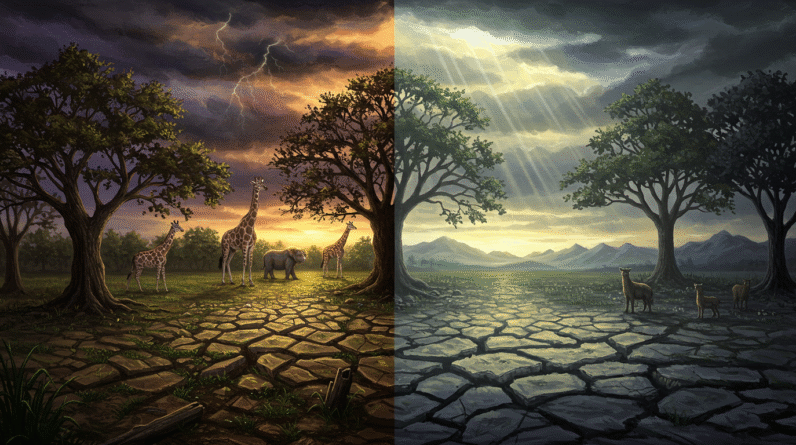Humanity In God’s Image (Genesis 1:27)
Introduction: Why Genesis 1:27 Still Matters to You Today
When you read the line, “So God created mankind in his own image” in Genesis 1:27, you encounter one of the most profound statements in all of Scripture. It’s a declaration about who you are, why you’re here, and how you should live. In a world that constantly tries to define you by your job, your appearance, your opinions, or your social status, Genesis 1:27 points you back to the Creator and to a dignity that does not depend on circumstances.
This article will walk with you through the biblical teaching that every human being bears God’s image. We’ll look at the context of the verse, explore what “image of God” has meant to believers through the centuries, and consider how this truth shapes your dignity, relationships, work, worship, and witness. Along the way, you’ll see how the theme of God as Creator runs like a golden thread through Scripture — from the opening words of Genesis 1:1 to the New Testament proclamation that Jesus is the perfect image of God.
The Setting of Genesis 1:27
Genesis 1:27 comes at the summit of the creation account. Chapter 1 moves from forming the heavens and the earth to filling the earth with life, and finally to creating human beings as the crowning work of God. The repeated refrain, “And God said…,” underscores God’s authority and creativity. When God says, “Let us make mankind in our image,” it is not a casual remark. It is the pivot point of the narrative, the moment when the Creator gives a creature the unique privilege of reflecting God’s character and exercising responsibility on earth.
To appreciate the depth of Genesis 1:27, you must read it in the broader context of the creation week. God’s creative work is orderly and purposeful, and humanity’s creation is framed as a deliberate act with relational and vocational implications. The next verse, Genesis 1:26, gives the mandate and the dignity: to rule, steward, and represent. Knowing that God is Creator (as declared in Genesis 1:1) shapes how you see yourself — not as an accident, but as a designed and loved being.
The Creator-God in Scripture
Throughout Scripture, God’s role as Creator is the bedrock for God’s authority and your calling. The psalms often return to the Creator theme to inspire awe and worship; for example, Psalm 8 marvels at how the Creator crowns humanity with glory and honor. The New Testament writers also affirm God’s role as Creator while showing how Jesus is central to that creation story. When you stand in the presence of a creative, sovereign God, it changes the way you live, serve, and worship.
What Does “Image of God” Mean?
When theologians and pastors speak about the “image of God” (imago Dei), they’re trying to describe how human beings reflect God in some way. Over the centuries, several complementary understandings have developed. Each helps you grasp a different facet of what it means that you bear God’s likeness.
The Substantive View: What You Are
The substantive view emphasizes that there is something in the makeup of human beings — a substance or quality — that reflects God. This might be reason, morality, creativity, or the capacity for relationships. In this sense, when Scripture says you are in God’s image, it’s pointing to intrinsic qualities that set you apart from animals and plants. This view helps you see that your worth is not contingent on productivity or appearance; it’s grounded in the nature God gave you.
The Relational View: Who You Are in Relation
The relational view highlights that bearing God’s image primarily concerns relationships. God is triune — Father, Son, and Holy Spirit — and created humans for a relationship with Himself and one another. You were made for community, love, and fellowship. The relational aspect of the imago Dei reminds you that isolation and selfishness miss the heart of God’s design. When you love, forgive, and seek reconciliation, you reflect the relational God who created you.
The Functional View: What You’re Called to Do
Another perspective focuses on function: to bear God’s image is to act as God’s representative on earth. In Genesis 1:26, God gives humans the responsibility to “rule” or steward creation. This functional view sees human dignity as tied to vocation and service. You are called to exercise wise dominion, care for the earth, and cultivate the good in ways that mirror God’s wise and loving rule.
The Structural View: Body, Mind, and Spirit Together
Some emphasize the integrated nature of the human person — body, mind, and spirit — as reflecting God. The imago Dei is not a single trait but a complex structure of capacities: intellect, conscience, will, emotion, and physical embodiment. This holistic view affirms that everything about you — spiritual and physical — bears divine significance and should be honored.
Equality and Dignity of All People
When Genesis 1:27 declares that God created mankind in His image, it makes an unambiguous statement about the equal worth of all human beings. Whatever divides people — ethnicity, tribe, gender, economic status, or ideology — does not undo the fundamental truth that every person bears God’s likeness and is worthy of respect. Scripture builds on this foundation to call you to justice and love.
The New Testament reiterates this truth in practical ways. For example, James 3:9 asks you to consider the inconsistency of praising God while cursing people made in God’s image. Paul’s teaching about the new humanity in Christ also breaks down barriers between groups, showing that God’s image creates a unity that transcends social divisions. When you treat another person as lesser, you have forgotten what Genesis 1:27 intends you to remember every day.

Male and Female: Bearing the Image Together
Genesis 1:27 says God created “male and female” in His image. This is not a diminution of one gender or a hierarchy; it is a mutual bearing of God’s likeness. Both men and women equally reflect the Creator, and both are necessary to display the fullness of that image. The Genesis account affirms the complementarity and equal dignity of both sexes.
Because both male and female bear God’s image, issues related to gender must be handled with care, humility, and biblical faithfulness. Whether in family life, church leadership, or social policy, you are called to affirm the equal worth of men and women, to protect the vulnerable, and to cultivate environments where the image-bearing capacity of every person can flourish.
Vocation: Stewardship and Dominion
Genesis 1:26–28 links the image of God with the call to stewardship. You are given responsibility to “fill the earth” and exercise wise dominion. This is not a license for exploitation; it’s a call to care. The Creator entrusted you with the care of creation because you bear God’s image and are to reflect God’s loving rule.
Stewardship includes how you treat the environment, how you engage in work, and how you shape culture. The apostle Paul later develops the idea of new creation and a redeemed vocation, but the original call to faithfulness in the created order remains. When you approach your daily work, family life, and civic duties as God-given responsibilities, you participate in the ongoing work of the Creator.
The Image Marred by Sin
Genesis 3 records humanity’s fall into sin, and the effects are devastating. When you read about Adam and Eve’s disobedience in Genesis 3, you see the image of God distorted. Sin corrupts your relationships — with God, with others, and with the created world. It darkens your reason, twists your desires, and distorts your ability to reflect God’s character.
The Bible does not pretend that humans still perfectly reflect God after the fall. Instead, it presents a broken world longing for restoration. Paul’s words in Romans 3:23 — that all have sinned — remind you that the image is marred in every heart. Yet Scripture also promises hope: the image, though marred, is not erased. God’s gracious plan moves toward restoration.
The Image Being Renewed in Christ
The good news of the Gospel is that God is at work to renew the image in you. Jesus Christ came to restore what sin had damaged. Paul writes that believers are being transformed into the image of Christ (see 2 Corinthians 3:18), and that Christ is the “firstborn over all creation” so that in him all things might be reconciled (see Colossians 1:15-17). The redemption offered in Christ aims at a full restoration — a renewed humanity that bears God’s image in the way God originally intended.
This renewal is not cosmetic. It changes your heart, reorders your affections, and restores your capacity to relate to God and others. When you embrace Christ, you begin the lifelong work of being conformed to His image. Scripture points to a final consummation when the image will be fully restored in the new heavens and new earth, where righteousness dwells.
Jesus as the Perfect Image of God
The New Testament makes it clear that Jesus is the exact representation of the Father. Hebrews 1:3 says the Son is “the radiance of God’s glory and the exact representation of his being” (Hebrews 1:3). In Jesus you see what God is like. The apostle John declares that the Word became flesh (see John 1:14) — God’s image perfectly embodied. When you look to Christ, you see the healed and holy image of God — a pattern for your own transformation.
Creation, Redemption, and the Cosmic Renewal
The Bible’s story does not treat creation and redemption as separate tracks. The Creator’s work and the Redeemer’s work are woven together. Paul writes about the groaning of creation and its longing for the revealing of the sons of God (Romans 8:19-23). The redemption of humanity has implications for all creation. Because you bear God’s image, your restoration is tied to the renewal of the world God made.
Colossians 1:15-17 beautifully connects Christ’s role in creation to his reconciling work so that everything holds together in him (Colossians 1:15-17). As you participate in God’s mission, you are part of a cosmic story that moves from creation to fall to redemption to restoration.
Ethical Implications: Life, Justice, and Love
If you truly believe that every person bears God’s image, it will shape your ethics. You will be compelled to defend the sanctity of life, to oppose dehumanizing practices, and to pursue justice for the oppressed. The Bible consistently links your treatment of others to your reverence for God.
Jesus taught that the greatest commandments are to love God and love your neighbor. The prophetic and wisdom traditions emphasize justice, mercy, and humility (see Micah 6:8). Because people bear God’s image, you cannot separate spiritual faith from ethical action. Your faith must produce fruit in how you treat the poor, the stranger, and those on the margins.
Pastoral and Evangelistic Implications
Understanding the imago Dei informs how you share the Gospel. You will speak to people not as objects to be manipulated but as image-bearers whose souls are precious to God. Evangelism must combine truth with compassion. When you preach the saving work of Christ, you are offering the very restoration of what God intended when He made humanity.
Billy Graham often appealed to both the heart and conscience, inviting people to repent and trust Christ. You, too, must call people to face their sin (see Romans 3:23) and to find forgiveness through Jesus — the one who fully reflects God’s image. The Gospel addresses both the brokenness of your relationship with God and the brokenness you see in the world.
Living Out the Image: Practical Steps for You
What does it look like day-to-day to live as one who bears God’s image? Here are practical ways to let Genesis 1:27 shape your life:
- Remember your identity. Begin each day recalling that you are made in God’s image and loved by the Creator. This changes how you handle success and failure.
- Treat others with dignity. Speak and act toward every person as someone who reflects God. Let humility and patience guide your interactions.
- Serve faithfully in your calling. Whether at home, work, or church, approach your tasks as a stewardship entrusted by God.
- Protect the vulnerable. Advocate for unborn life, the elderly, the oppressed, and those who cannot defend themselves.
- Pursue justice and mercy. Let your faith be visible in acts of compassion and advocacy that honor God’s image in others.
Each of these steps flows from the conviction that God created you on purpose and is working to restore you for His purposes.
Worship, Prayer, and the Creator
Worship flows naturally from understanding your origin. When you reflect on God as Creator, worship becomes not only an emotion but a response of reverence and gratitude. The psalms teach you to marvel at God’s handiwork and to recognize your place within it. Psalm 8 and Psalm 19:1 invite you to behold the heavens and declare the glory of God. Prayer, likewise, becomes a conversation with the One who knows you intimately (see Psalm 139).
As you worship, remember that Jesus’ life is the model for true devotion. He honored the Father’s will and showed what it looks like for humanity to live in perfect union with God. When you pray and worship, you participate in the restoration of the image as you are conformed to Christ.
Creation Care and the Gospel
Because humans are entrusted with creation, taking care of the environment is not a peripheral concern — it’s part of faithful stewardship. The earth groans under the burden of sin (Romans 8:22), and your creation care anticipates the renewal God promises. Responsible stewardship includes wise use of resources, protection of biodiversity, and concern for communities affected by environmental harm.
Caring for creation also has evangelistic value. When people see Christians faithfully caring for God’s world, it testifies to a Creator God who values what He has made. The Gospel speaks to both the soul and the world Jesus came to redeem.
The Church’s Role in Reflecting the Image
The church has a special responsibility to reflect God’s image in corporate life. The gathered community should be a visible sign of renewed humanity — diverse yet united, serving one another in love, and working for justice. When the church demonstrates hospitality, mercy, and truth, it shows the world a foretaste of what restored humanity will look like.
Paul’s letters urge the church to clothe itself with the new self, created to be like God in true righteousness and holiness (Ephesians 4:24). When your church practices reconciliation, stands with the oppressed, and proclaims the Gospel, it embodies the image-bearing calling given in Genesis.
Cultural Engagement: Your Responsibility in Society
Bearing God’s image means that you are called to engage culture thoughtfully and lovingly. Whether you’re an artist, politician, teacher, parent, or businessperson, your work can shape society to better reflect God’s justice and beauty. The New Testament shows that the gospel transforms entire cultures as believers live out Christlike virtues.
In your public life, prioritize truth-telling, humility, and service. Let your Christian convictions guide how you vote, how you use media, and how you influence others. Remember that the Bible calls you to be salt and light, influencing culture not by coercion but by faithful witness.
The Urgency of the Gospel: Hope for Every Image-Bearer
The Bible’s message is urgent because people are lost and in need of restoration. Your neighbor, your family member, and even you may need the healing that Christ offers. The good news is that God moves toward you with love and grace. The Gospel is not merely about moral improvement; it is about new life — the restoration of the image through the person and work of Jesus Christ.
Acts reminds you that God has appointed a day when He will judge the world with justice, and that He calls people everywhere to repentance (Acts 17:30-31). The call to repentance is also an appeal to embrace the dignity God gave you and to let Him restore you fully.
Addressing Contemporary Challenges
You live in a time when many voices compete to define what it means to be human. Secular philosophies, technological advances, and cultural shifts raise complex questions: What is the source of human worth? How should we treat artificial life? How do we care for those at the margins? The biblical doctrine of the image of God gives lasting answers rooted in the Creator.
When technology tempts you to treat persons as mere data or utility, Genesis 1:27 reminds you that every human life has intrinsic value. When debates arise about identity or personhood, the Creator’s declaration anchors your convictions while calling you to compassion and wisdom. The church must engage these questions with both truth and love.
Returning to the Heart: Personal Reflection
Take a moment to reflect. Do you live as one who truly believes you were made in God’s image? Do others see God reflected in you? Answering those questions begins with honest self-examination and prayer. Scripture calls you to repentance and transformation. As Isaiah 64:8 says, you are God’s workmanship — the Potter is shaping you.
Pray for a renewed vision of the Creator, ask for humility to treat others as image-bearers, and seek the Spirit’s power to live out your calling. The Christian life is a journey of grace where God remakes you more into the likeness of Christ.
Conclusion: Hope and Responsibility
Genesis 1:27 is not an abstract theological statement. It is a practical and transformative truth that affects your identity, relationships, work, and witness. You are created in the image of God — this is your dignity and your duty. Sin has marred that image, but through Christ, there is hope: the image is being restored. As you follow Jesus, you join God’s work of renewing humanity and all creation.
Take this truth into your daily life. Let it shape how you see yourself, how you treat others, and how you steward the world God has entrusted to you. Live as a reflection of your Creator, and invite others to discover the restorative power of the Gospel that heals and renews the image of God in humanity.
If you want to meditate further on these themes, read these passages in context and let Scripture speak to your heart: Genesis 1:26-27, Psalm 8, Psalm 139, Colossians 1:15-17, and 2 Corinthians 3:18.
Explore More
For further reading and encouragement, check out these posts:
👉 7 Bible Verses About Faith in Hard Times
👉 Job’s Faith: What We Can Learn From His Trials
👉 How To Trust God When Everything Falls Apart
👉 Why God Allows Suffering – A Biblical Perspective
👉 Faith Over Fear: How To Stand Strong In Uncertain Seasons
👉 How To Encourage Someone Struggling With Their Faith
👉 5 Prayers for Strength When You’re Feeling Weak

📘 Jesus and the Woman Caught in Adultery – Grace and Mercy Over Judgement
A powerful retelling of John 8:1-11. This book brings to life the depth of forgiveness, mercy, and God’s unwavering love.
👉 Check it now on Amazon
As a ClickBank & Amazon Affiliate, I earn from qualifying purchases.
Acknowledgment: All Bible verses referenced in this article were accessed via Bible Gateway (or Bible Hub).
“Want to explore more? Check out our latest post on Why Jesus? and discover the life-changing truth of the Gospel!”








